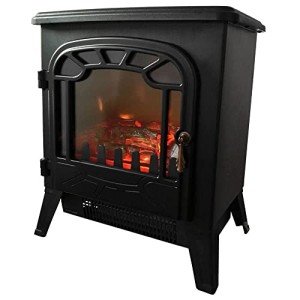The Fireplace: A Warm Embrace of Tradition and Comfort
Fireplaces have actually been an important part of human habitation for centuries, serving as a source of warmth, a meeting place, and a sign of convenience. While the modern versions may differ incredibly from their ancient ancestors, the allure of a fireplace sustains. This short article explores the various aspects of fireplaces, including their history, function, types, and maintenance, while also addressing frequently asked concerns.
The Evolution of Fireplaces
Fireplaces date back to ancient times when open flames were used for cooking, heating, and security from wildlife. Over the centuries, fireplaces developed from basic fire pits to the sophisticated performances we see today. Here is a brief timeline of their development:
- Prehistoric Era: Cavemen utilized open flames for heat and cooking. Wind and smoke often blew into houses.
- Middle Ages: Stone and brick fireplaces became typical in homes and castles, including chimneys to bring smoke outside.
- Renaissance: Elaborately designed mantels emerged, and fireplaces ended up being centers of social interaction.
- Industrial Revolution: Innovations in heating products led to a variety of designs and functionalities.
- Modern Era: The development of gas, electric, and bioethanol fireplaces provided cleaner options to traditional wood-burning systems.
Table 1: The Evolution of Fireplaces
| Era | Qualities |
|---|---|
| Prehistoric Era | Open flames for heat and cooking |
| Middle Ages | Stone and brick structures with early chimneys |
| Renaissance | Ornate mantels, social centers |
| Industrial Revolution | Diverse designs, advent of brand-new products |
| Modern Era | Gas, electric, and bioethanol alternatives |
The Purpose of a Fireplace
Fireplaces serve double functions: they offer physical heat and produce a psychological environment. Property owners often collect around the fireplace to bond, share stories, and enjoy a cozy setting. The glow of a fire can be relaxing, adding to a sense of relaxation and intimacy. Beyond personal pleasure, fireplaces likewise provide practical advantages, including:
- Home Heating: Effective heat source, especially in chillier climates.
- Increased Home Value: A properly designed fireplace can boost the aesthetic worth of a home.
- Emergency Heating: In case of power blackouts, wood-burning fireplaces can serve as an important heat source.
- Aesthetic Appeal: A focal point that contributes to interior decoration.
Types of Fireplaces
Today, fireplaces come in numerous styles and fuel types, accommodating a diverse variety of preferences and settings. Here are some common types:
Wood-Burning Fireplaces:
- Traditional fire pits
- Timeless masonry fireplaces
- Require substantial upkeep and chimney maintenance
Gas Fireplaces:
- Available in both direct vent and ventless varieties
- Easier to utilize and keep than wood-burning fireplaces
- Supply immediate heat with a flick of a switch
Electric Fireplaces:
- Offer associated heat sources without real flames
- Frequently developed to imitate traditional fireplaces
- Suitable for smaller spaces and homes without a chimney
Bioethanol Fireplaces:
- Use bioethanol fuel, supplying a sustainable alternative
- Require no ventilation and can be positioned anywhere
- Safe and simple to maintain
Table 2: Types of Fireplaces
| Type | Fuel Source | Features | Maintenance Requirements |
|---|---|---|---|
| Wood-Burning | Wood | High ambiance, heat source | Routine chimney cleansing |
| Gas | Gas or propane | Instant heat | Very little, periodic servicing |
| Electric | Electrical power | Easy setup | Extremely low maintenance |
| Bioethanol | Bioethanol fuel | Ventless, portable | Low, generally cleaning up |
Upkeep and Safety Considerations
Owning a fireplace includes certain responsibilities, particularly concerning its safe operation and long-lasting upkeep. Here are necessary maintenance ideas and security standards:
Maintenance Tips:
- Annual Inspection: Always have your chimney and fireplace examined at least once a year by a certified technician.
- Routine Cleaning: Clean out ashes and particles after each use, and make sure the flue is open before starting a fire.
- Inspect for Cracks: Inspect masonry for fractures or damage to avoid structural problems.
- Use Proper Fuel: Only use dry, skilled wood for wood-burning fireplaces; do not burn treated wood.
Safety Guidelines:
- Install Smoke Detectors: Ensure smoke detectors are practical, checking them month-to-month and changing batteries as needed.
- Keep a Fire Extinguisher: Have one neighboring, even if a fireplace is used occasionally.
- Supervise Flames: Never leave a fire unattended, and make sure kids and family pets are kept an eye on around the fireplace.
Regularly Asked Questions (FAQs)
1. How can I decrease smoke from a wood-burning fireplace?
To decrease smoke, use dry, seasoned wood, and guarantee that your chimney is clean and unobstructed.
2. Is it safe to utilize gas fireplaces during a gas leakage?
Never ever utilize a gas fireplace during a gas leakage. Right away evacuate the area and contact gas services for assistance.
3. Can I set up an electric fireplace myself?
Electric fireplaces are normally easy to install, however it is advised to seek advice from with experts to ensure security and compliance with regional building regulations.
4. What is the best type of fireplace for small spaces?
Electric fireplaces or bioethanol designs are frequently best for small areas, as they do not need extensive ventilation or structural adjustments.
Fireplaces have actually transcended their initial function of offering heat to end up being treasured components of home style and domesticity. Outdoor Fireplaces UK stimulate memories of heat, events, and togetherness while offering functional benefits that boost modern living. By comprehending the various kinds of fireplaces, their maintenance, and safety practices, house owners can enjoy the timeless appeal of this precious feature for generations to come.

